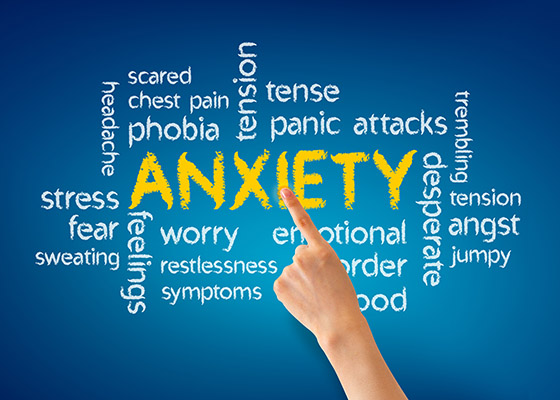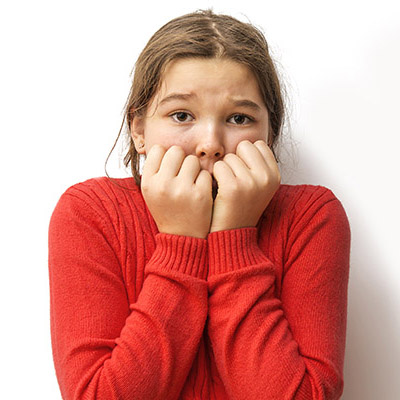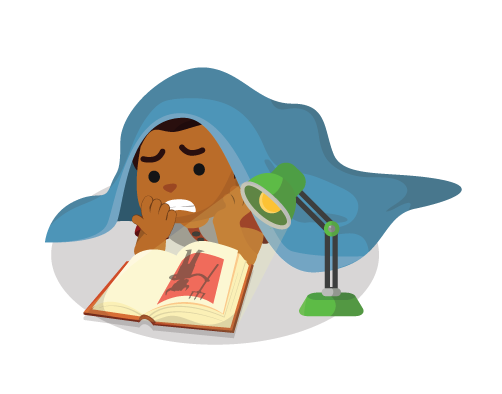ABCs of Anxiety: Recognising Anxiety in Kids and How to Cope
Anxiety is another form of stress, and it can be experienced a number of different ways physically and emotionally. It is a natural human reaction and serves as an important biological function, acting as the body's alarm system that is activated when we perceive danger or threat. However, it can easily take over someone's life and get them caught up in what might happen in the future. In light of Mental Health Awareness Week 2017, we have written a guide on how to recognise symptoms of anxiety in children early on, and how to help them cope.
What Is a 'Normal' Amount of Anxiety?
It's natural for unfamiliar or challenging situations to incite feelings of anxiety or nervousness in people of all ages and from all walks of life. You may feel it when you have a big presentation at work, when moving house, or studying for an important test at school. it can be helpful in some ways, as it helps us stay alert, focused and ready to do our best. However, if someone gets too caught up in the 'what if's, it can get overwhelming and interfere with someone's ability to get things done, or start to take over the good an enjoyable parts of life.

A Basic Guide to Anxiety Disorders
Anxiety disorders are among the most common mental health issues, however there are many different types of anxiety disorders, all with different symptoms. They all share one common thing – prolonged, intense anxiety that is out of proportion to the present situation and affects a person's daily life and happiness.
We have put together a list of six common anxiety disorders. If you recognise any of these symptoms in your children, it is important to talk to your family GP to help you seek treatment that is best suited for your child.
Generalised Anxiety Disorder (GAD)
With this common anxiety disorder, sufferers worry excessively about many things, such as their health, safety of their family, or the future. They may always think that the worst could happen, and feel constant worry and dread. GAD can manifest into physical symptoms too, such as headaches, muscle tension, stomach aches and tiredness.
Obsessive Compulsive Disorder (OCD)
Unlike the media often portrays it, OCD isn't necessarily manifested in the need to keep everything clean. A person who suffers from OCD is continuously preoccupied with intrusive thoughts, obsessions and compulsions (repetitive actions to try to relieve anxiety).
Phobias
This form of anxiety is triggered by intense fears of specific things or situations that aren't inherently dangerous, such as spiders, heights or flying in a plane. Those who suffer with phobias go to extreme lengths to avoid the things they fear.
Social Anxiety
This anxiety is triggered by social situations or having to speak in front of others. A less common form called selective mutism can cause some children or teenagers to be too fearful to even speak in certain situations.
Panic Attacks
During a panic attack, a sufferer will experience sudden and intense physical symptoms of panic for seemingly no apparent reason. These episodes can include pounding of the heart, shortness of breath, dizziness, numbness or tingling in the limbs. An average panic attack lasts around 15 minutes.
Post Traumatic Stress Disorder (PTSD)
This type of anxiety results from a traumatic event from a victim's past. Symptoms include flashbacks and nightmares re-experiencing the event, heightened feelings of fear and aggression, and avoidance of things that relate in any way to the traumatic event.

How Do I Help My Child Cope?
The best way to help your child navigate your child through anxiety is to acknowledge the problem in a supportive and non-judgmental way. Talking openly with your child about their symptoms and worries, and really trying to understand what they go through on a day to day basis, will help them in feeling less alone.
Here at Health and Care, we have many programs designed to help constructively guide kids and teenagers through feelings of anxiety. For kids under 10 years old, the Worried Wilber Activities Book and CD-ROM is a great resource for helping children navigate through their anxieties, with helpful games and activities to encourage their emotional development. For secondary school ages children, the Feelings Awareness Educational Board Game is a good way to encourage young people to open up a dialogue about their feelings and anxieties, while teaching them how to cope in dealing them in a healthy manner.

Remember that the journey to good mental health is not always easy, so don't be disheartened if certain programs or treatments don't work right away. Everyone is different, so finding something that works for your child may take a little bit of trial and error. It's worth it in the long run though, when your child is living a happy and healthy life unburdened by their anxieties.
Have something to say about this topic? Why not tell us in the comments below or find us on Facebook and Twitter!
